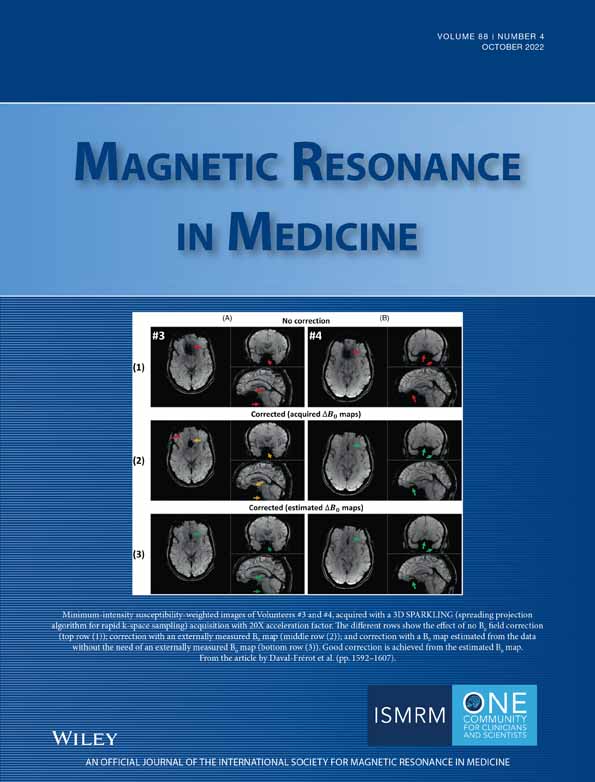EPI phase error correction with deep learning (PEC-DL) at 7 T
Lili Wang and Chengyan Wang contributed equally to this work.
Funding information: Key R&D Program of China, Grant/Award Number: 2018YFC1312900; National Natural Science Foundation of China, Grant/Award Numbers: 62001120; 81971583; Shanghai Municipal Science and Technology Major Project, Grant/Award Numbers: 2017SHZDZX01; 2018SHZDZX01; Shanghai Natural Science Foundation, Grant/Award Number: 20ZR1406400; Shanghai Sailing Program, Grant/Award Number: 20YF1402400
Click here for author-reader discussions
Abstract
Purpose
The phase mismatch between odd and even echoes in EPI causes Nyquist ghost artifacts. Existing ghost correction methods often suffer from severe residual artifacts and are ineffective with k-space undersampling data. This study proposed a deep learning–based method (PEC-DL) to correct phase errors for DWI at 7 Tesla.
Methods
The acquired k-space data were divided into 2 independent undersampled datasets according to their readout polarities. Then the proposed PEC-DL network reconstructed 2 ghost-free images using the undersampled data without calibration and navigator data. The network was trained with fully sampled images and applied to two- and fourfold accelerated data. Healthy volunteers and patients with Moyamoya disease were recruited to validate the efficacy of the PEC-DL method.
Results
The PEC-DL method was capable to mitigate the ghost artifacts in DWI in healthy volunteers as well as patients with Moyamoya disease. The fourfold accelerated results showed much less distortion in the lesions of the Moyamoya patient using high b-value DWI and the corresponding ADC maps. The ghost-to-signal ratios were significantly lower in PEC-DL images compared to conventional linear phase corrections, mini-entropy, and PEC-GRAPPA algorithms.
Conclusion
The proposed method can effectively eliminate ghost artifacts for full sampled and up to fourfold accelerated EPI data without calibration and navigator data.




